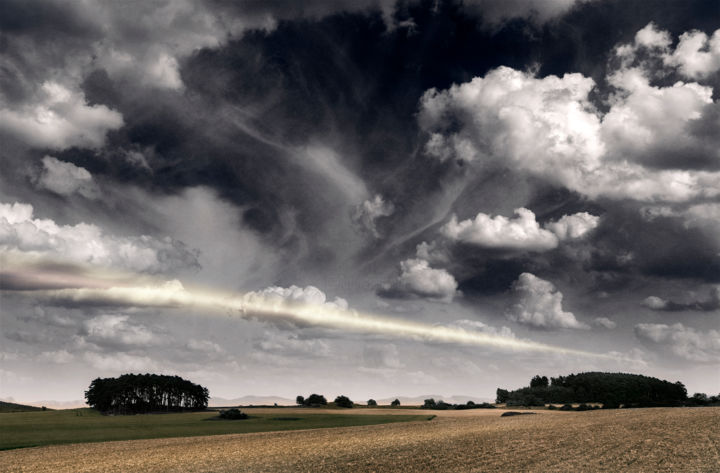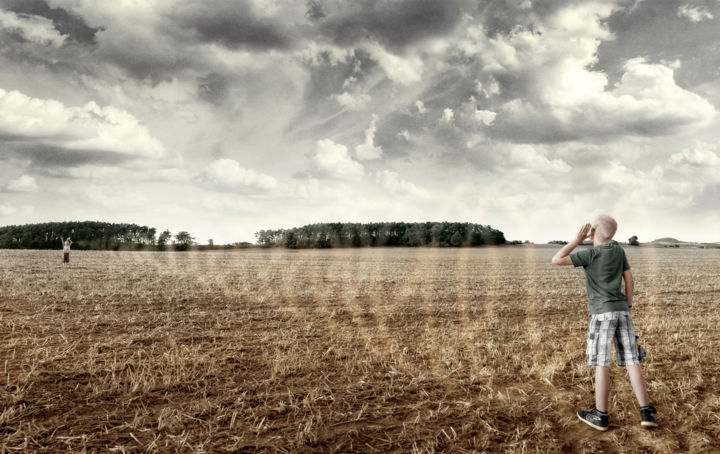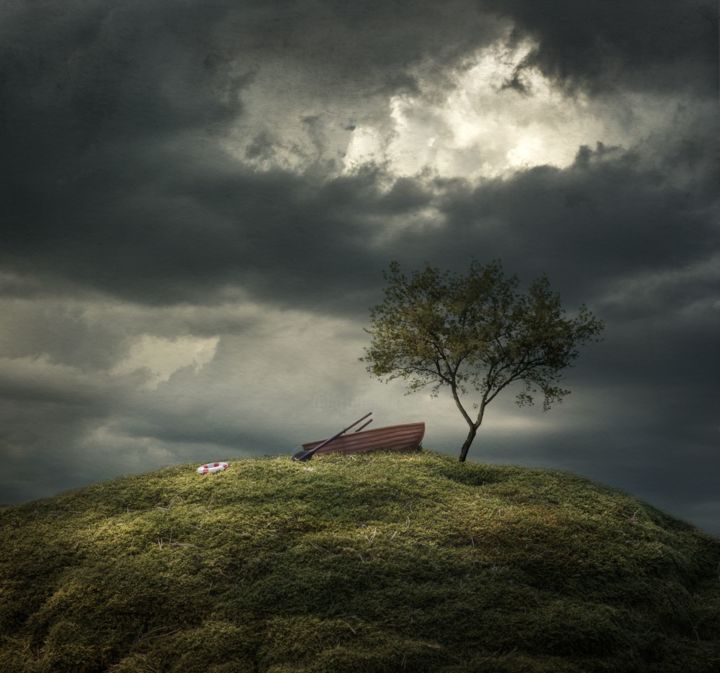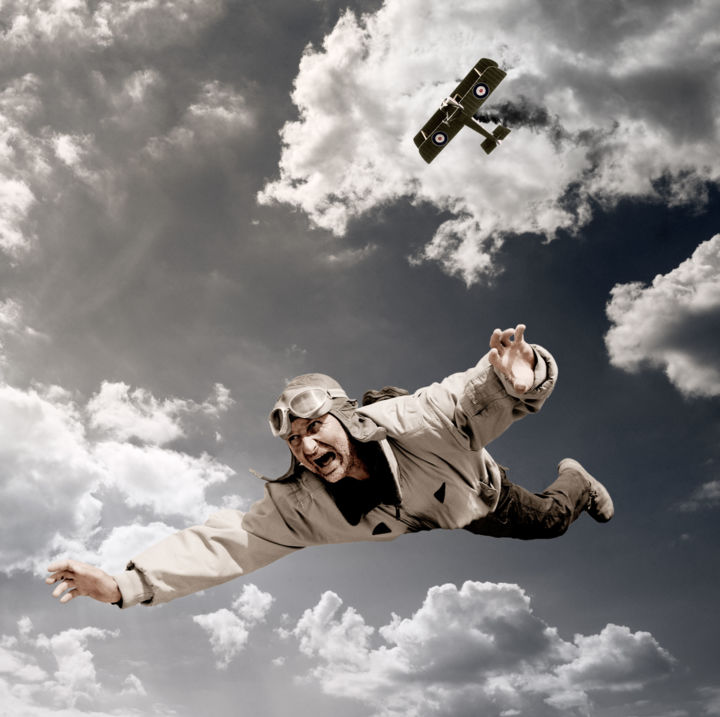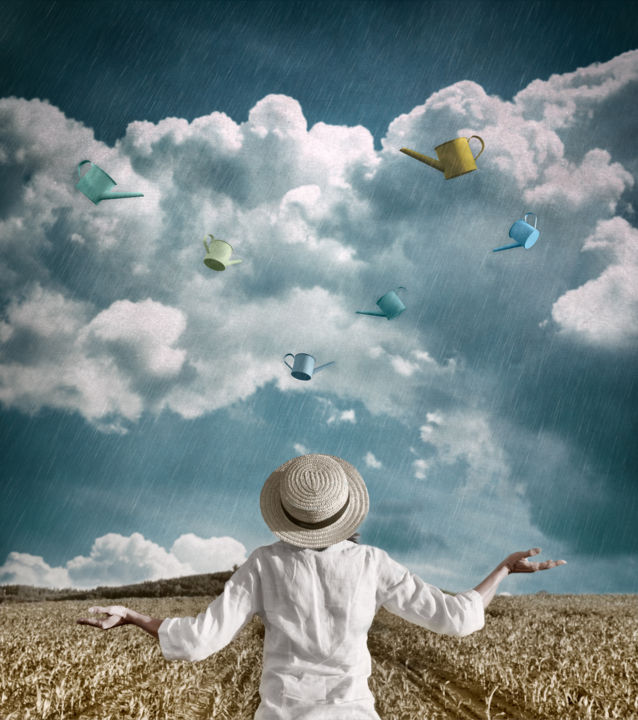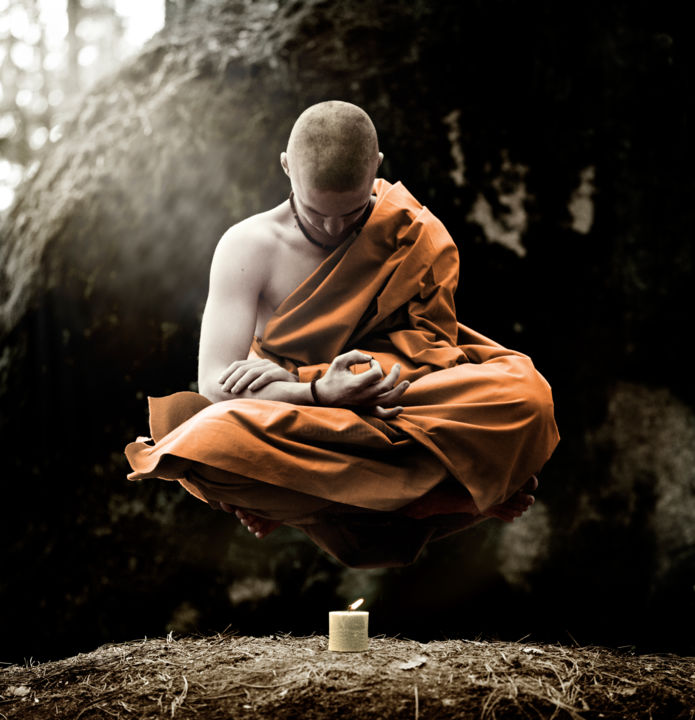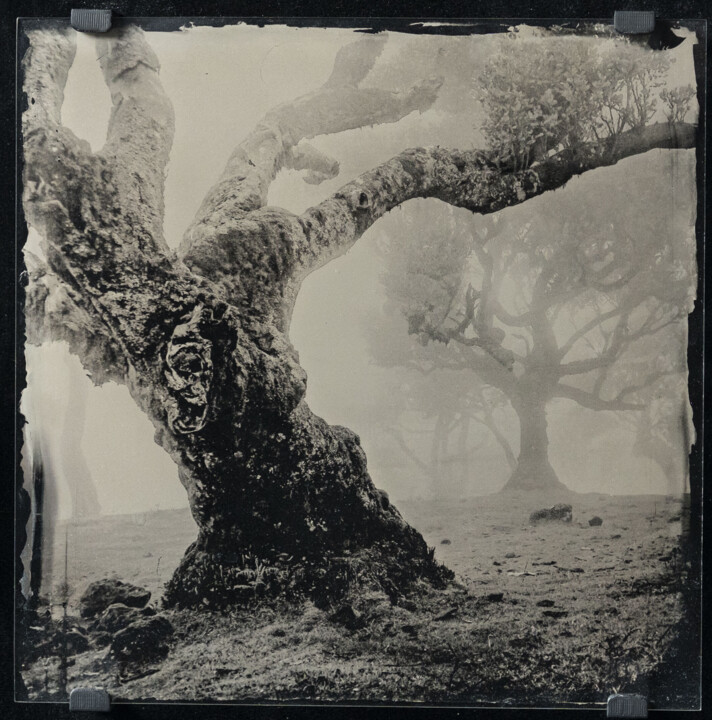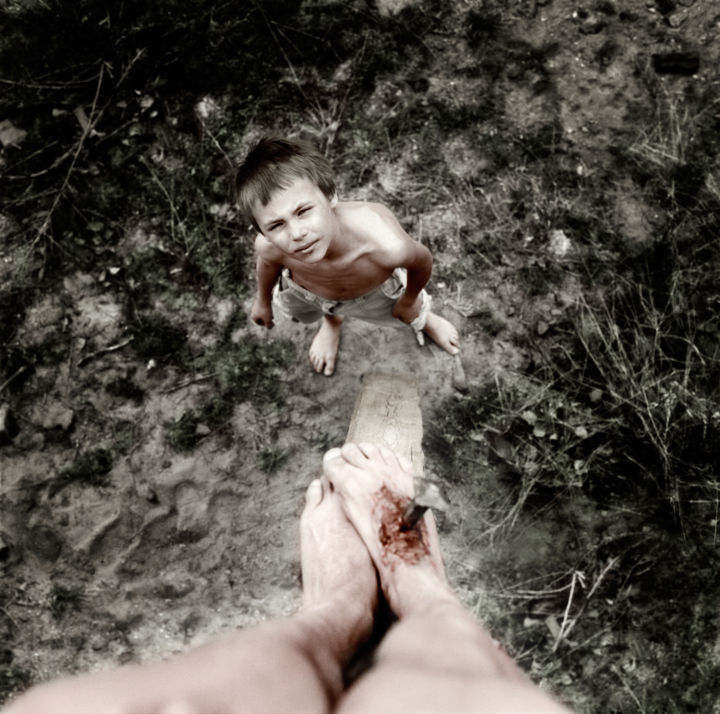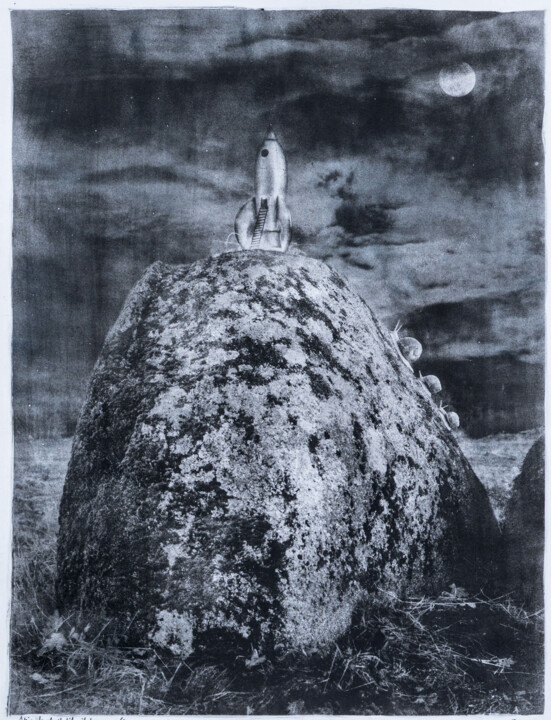What is your artistic journey, techniques and subjects you have experimented with to date?
During my photographic journey, I have really gone through many techniques, both analogue and digital, to finally settle on alternative photographic techniques. I started with analogue black and white photography, then later, thanks to my work in a puppet film studio, I switched to colour slide, experimented with painting photographic emulsion onto a painter's canvas, and wet developing, digital photography, and now a combination of digital and analogue photography.
The main subject I have been working on for years is landscape, or rather stories set in landscape. I was very influenced by my work in a puppet film studio, where I worked as a set maker and cameraman. Under the influence of this experience, I tried to make my own film, but I found that it required the involvement of many people and was very costly. That's why in my photographs I try to squeeze the film into a single photograph - to lock the story in a single image.
What are 3 aspects that differentiate you from other artists, making your work unique?
I think the uniqueness of the photographs stems from the very limited use of colours. For my colour photographs, the source is black and white photography, which has to stand up on its own. A kind of superstructure is digital colouring, where I try to use only very little saturated 2 to 3 colours.
The second aspect is the story mentioned above
The last significant feature of my photographs is the use of the local hilly landscape and the distinctive sky, taking up a substantial part of the image
Where does your inspiration come from?
That's a question I don't think anyone can answer truthfully. I think inspiration is a mixture of lived situations , read books, visited exhibitions and, most importantly, a certain state of the brain between waking and relaxing. A time when the brain is kind of idling. That's when the themes come into my head one by one. I'm just a recorder. I have no credit for this process whatsoever.
What is the intent of your art? What visions, sensations or feelings do you want to evoke in the viewer?
I have no primary intention, My goal is to have fun making the photograph itself and try to translate the original idea into a physical form. In terms of ideas, the work is always perfect, and I myself am always surprised how something so brilliant could have occurred to me in the first place. The problem is to get this "genius" on paper. It doesn't always succeed, and sometimes something significant gets lost along the way, so I wonder what was so amazing about the idea.
What is the process of creation of your works? Spontaneous or with a long preparatory process (technique, inspiration from art classics or other)?
The vast majority of photos are created first as an idea, then as a crude drawing, then I have to create decorations, photograph, edit and color
What techniques do you prefer?If yes, can you explain it?
Lately, I have been completely absorbed by the Resinotypia technique. It is an alternative photographic technique that uses the ability of gelatine coated with a photosensitive substance to harden in places that are illuminated by UV light. The image is created by contact copying over the enclosed positive, printed on a translucent foil. Later, the photosensitive substance is washed and the image is created on the gelatine thus treated by applying the pigment. It is a technique, with a lot of manual work. Each image is actually an original.
Are there any innovative aspects to your work? Can you tell us which ones?
It can be said that tuning the whole process is a march through unexplored territory, where, whether you want to or not, you have to be innovative.
Do you have a format or medium that you are most comfortable with?If yes, Why?
For me, the most popular medium is gelatin, which soaks in pigment and thus creates a durable photographic image.
Where do you produce your work? At home, in a shared or private studio? And within this space how is your production organized?
The photographs are made in the studio, which is one of the second largest rooms in the house. The wet part of the process is made in the smallest room, which was primarily designed as a technical room. Larger formats require a lot of dexterity to bring them into the studio undamaged.
Does your work lead you to travel to meet new collectors, for shows or exhibitions? If so, what do you gain from it?
I am fortunate enough to be a member of several photographic groups. Thanks to regular exhibitions, I am spurred to greater performances to exhibit here and there. The result of participating in exhibitions is, of course, increased interest in my work and occasional sales.
How do you imagine the evolution of your work and your figure as an artist in the future?
I hope to be able to realize some 3D photographic objects in the near future. I already have an idea.
Can you tell us about your most important exhibition experience?
It could be said that the most important exhibition was my first solo exhibition, at which I verified that the enthusiasm for making these photographs is not shared only by me, but that the photographs are also liked by others.
If you could have created a famous work in the history of art, which one would you choose? And why would you choose it?
If I could, I would like to create Vincent van Gogh's iconic Starry Night. There is something disturbing, unique and timeless in that work.
If you could invite a famous artist (dead or living) to dinner, who would it be? How would you propose him/her to spend the evening?
I think I'd like to invite Andy Warhol to dinner, that might be quite entertaining. I'd convince him by telling him something about the future.

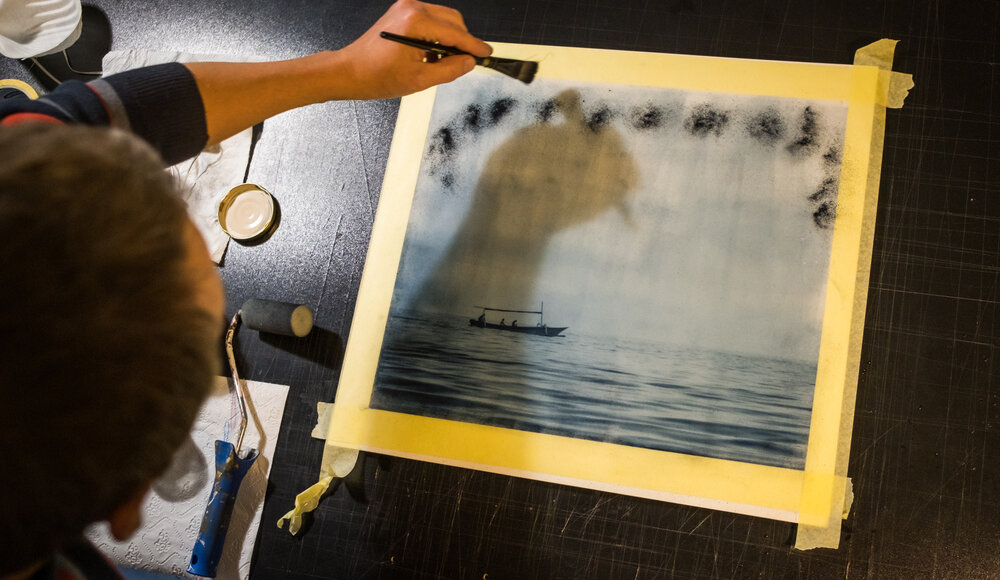





 Olimpia Gaia Martinelli
Olimpia Gaia Martinelli



